#Nino Baragli
Explore tagged Tumblr posts
Text

The Year of the Cannibals (I cannibali), Liliana Cavani (1969)
#Liliana Cavani#Italo Moscati#Britt Ekland#Pierre Clémenti#Tomas Milian#Delia Boccardo#Marino Masé#Francesco Leonetti#Alessandro Cane#Giulio Albonico#Ennio Morricone#Nino Baragli#1969#woman director
28 notes
·
View notes
Text

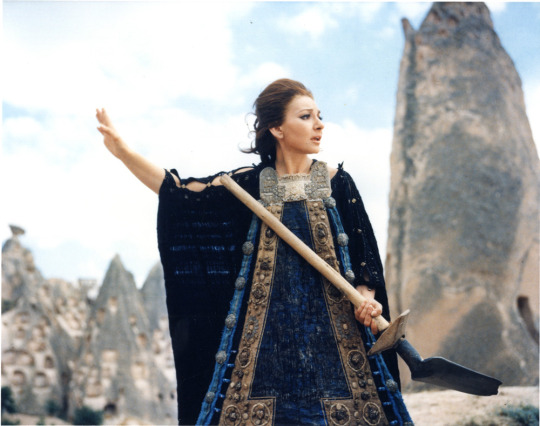
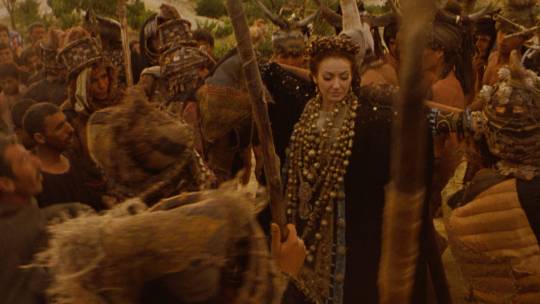

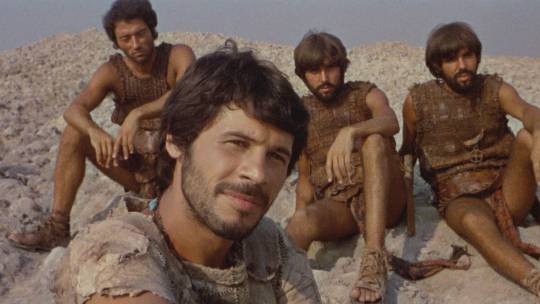

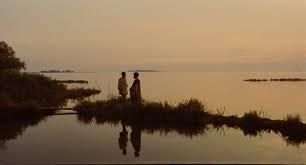



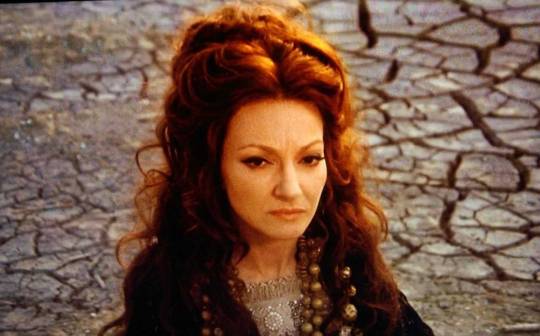
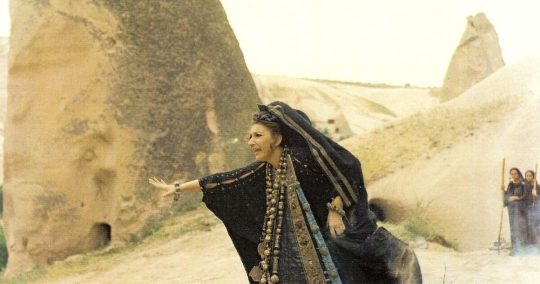

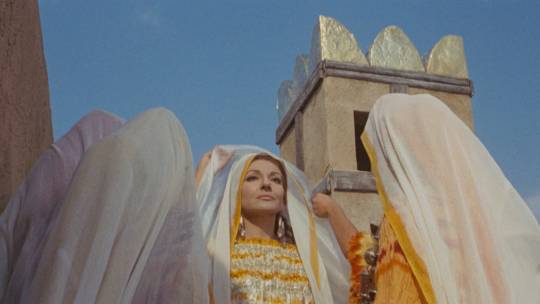


Medea (Pier Paolo Pasolini, 1969)
Cast: Maria Callas, Massimo Girotti, Lauren Terzieff, Giuseppe Gentile, Margareth Clémenti, Paul Jabara. Screenplay: Pier Paolo Pasolini, based on a play by Euripedes. Cinematography: Ennio Guarnieri. Production design: Dante Ferretti. Costume design: Piero Tosi. Film editing: Nino Baragli.
Pier Paolo Pasolini's retelling of the story of Medea is a challenge to anyone who doesn't already know the story: Pasolini is not interested in conventional movie storytelling, so the film feels shapeless, lurching through some scenes and lingering through others until it ends almost abruptly. What he's interested in is crafting a vision of antiquity, of the age from which the myths and legends came, that's primitive and tribal, not at all the graceful world of marble gods and goddesses we've come to associate with ancient Greece. This is a world in which people scrabble for survival in bleak desert settings, filmed in Turkey and Syria. In Pasolini's film, the Argo, the ship that brings Jason and the Argonauts to Colchis in search of the Golden Fleece, is a cobbled-together raft. The fleece itself is a somewhat ratty-looking ram's head with gilded horns. It's not exactly a film in which you'd expect to find a diva like Maria Callas, and yet her out-of-placeness somehow fits the character of Medea, a woman who would rise above almost any setting only to be dragged down by fate.
#Medea#Pier Paolo Pasolini#Maria Callas#Massimo Girotti#Lauren Terzieff#Giuseppe Gentile#Margareth Clémenti
23 notes
·
View notes
Text
Cast: Maria Callas, Massimo Girotti, Lauren Terzieff, Giuseppe Gentile, Margareth Clémenti, Paul Jabara. Screenplay: Pier Paolo Pasolini, based on a play by Euripedes. Cinematography: Ennio Guarnieri. Production design: Dante Ferretti. Costume design: Piero Tosi. Film editing: Nino Baragli.
Pier Paolo Pasolini's retelling of the story of Medea is a challenge to anyone who doesn't already know the story: Pasolini is not interested in conventional movie storytelling, so the film feels shapeless, lurching through some scenes and lingering through others until it ends almost abruptly. What he's interested in is crafting a vision of antiquity, of the age from which the myths and legends came, that's primitive and tribal, not at all the graceful world of marble gods and goddesses we've come to associate with ancient Greece. This is a world in which people scrabble for survival in bleak desert settings, filmed in Turkey and Syria. In Pasolini's film, the Argo, the ship that brings Jason and the Argonauts to Colchis in search of the Golden Fleece, is a cobbled-together raft. The fleece itself is a somewhat ratty-looking ram's head with gilded horns. It's not exactly a film in which you'd expect to find a diva like Maria Callas, and yet her out-of-placeness somehow fits the character of Medea, a woman who would rise above almost any setting only to be dragged down by it.



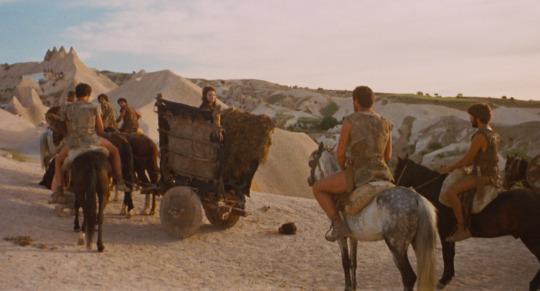
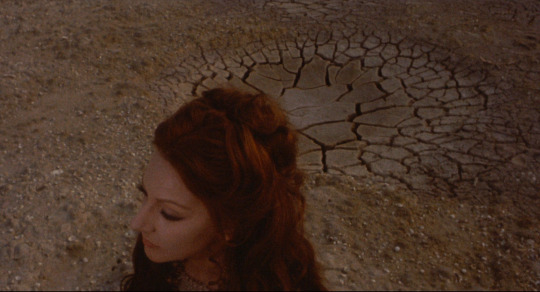

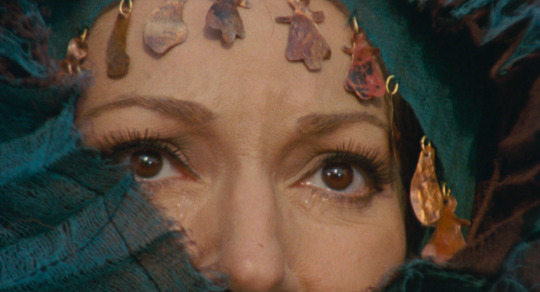
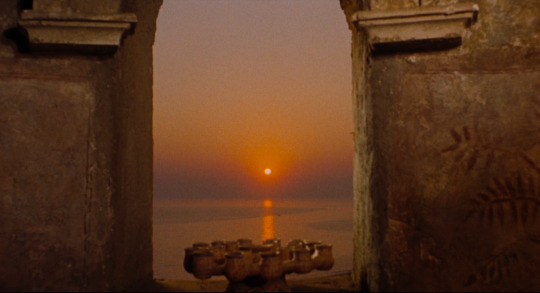
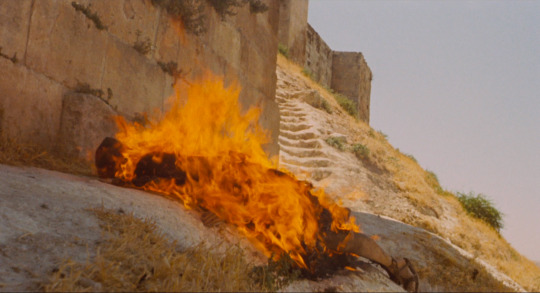

Medea (1969) Dir. Pier Paolo Pasolini
794 notes
·
View notes
Text

#ProyeccionDeVida
🎥 Cine Italiano, presenta:
🎬 “¡AGÁCHATE, MALDITO!” [Giù la testa / Once Upon a Time in the Revolution]
🔎 Género: Western / Bélico / Drama / Amistad / Revolución Mexicana / Spaghetti Western / Años 1910-1919
⌛️ Duración: 156 minutos

✍️ Guión: Sergio Leone, Sergio Donati y Luciano Vincenzoni
🎼 Música: Ennio Morricone
📷 Fotografía: Giuseppe Ruzzolini
🗯 Argumento: Juan Miranda y John Mallory, veterano del IRA, se conocen en México y deciden dinamitar un banco sin saber que realmente se trata de una prisión. La explosión libera a los revolucionarios que estaban presos y ambos se convierten en héroes de la revolución. Poco tiempo después, las tropas del gobierno comienzan a seguirles los pasos.

👥 Reparto: James Coburn (John H. Mallory), Rod Steiger (Juan Miranda), Romolo Valli (Dr. Villega), Nino Baragli, Maria Monti (Adelita), David Warbeck (Sean Nolan), Amato Garbini (Policía en el Tren), Rik Battaglia (Santerna) y Vivienne Chandler (Coleen).
📢 Dirección: Sergio Leone
© Productora:United Artists
🌎 Países: Italia-España
📅 Año: 1971
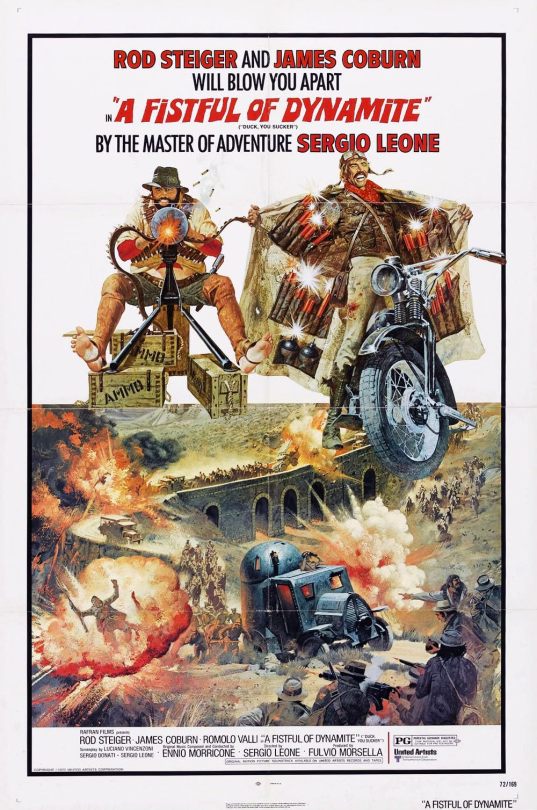
📽 Proyección:
📆 Jueves 24 de Octubre
🕔 6:30pm.
🏡 Auditorio Leonardo Da Vinci del Instituto Italiano de Cultura (av. Arequipa 1055, Urbanización Santa Beatriz - Lima)
🚶♀️🚶♂️ Ingreso libre
🎤 El dato: Después de la proyección se realiza el Conversatorio a cargo de Sebastián Pimentel (crítico de cine).
0 notes
Video
youtube
Ginger e Fred Official Trailer #1 - Marcello Mastroianni Movie (1986)
TONINO GUERRA Federico Fellini2 BALLERINI: QUANDO SI SEPARERANNO L UOMO ANDRA' IN MANICOMIOSoggetto Federico Fellini, Tonino Guerra. Sceneggiatura Federico Fellini, Tonino Guerra, Tullio Pinelli Produttore Alberto Grimaldi Fotografia Tonino Delli Colli, Ennio Guarnieri Montaggio Nino Baragli, Ugo De Rossi, Ruggero Mastroianni Effetti speciali Adriano Pischiutta Musiche Nicola Piovani Scenografia Dante Ferretti Trucco Amedeo Alessi Interpreti e personaggi Giulietta Masina: Amelia Bonetti/Ginger Marcello Mastroianni: Pippo Botticella/Fred Franco Fabrizi: Aurelio, il presentatore Ezio Marano: scrittore Totò Mignone: Totò Jacques Henri Lartigue: Frate Gerolamo Augusto Poderosi: Evelina Pollini Friedrich von Ledebur: ammiraglio Aulenti Friedrich von Thun: Armando Bissanti Antonino Iuorio: ispettore di produzione Fabrizio Fontana: Floris Tartarina Barbara Scoppa: Barbara, giornalista di gossip Elisabetta Flumeri: giornalista Claudio Botosso: giornalista nello studio televisivo Salvatore Billa: Clark Gable Leonardo Petrillo: Marcel Proust Daniele Aldrovandi: Marty Feldman Eolo Capritti: Telly Savalas Ginestra Spinola: chiromante Sergio Ciulli: figlio della chiromante Elena Cantarone: infermiera Alex Partexano: marinaio Stefania Marini: Stefania Roberto Accornero: autista pulmino Francesco Casale: Catanzaro, il mafioso Rosario Galli: Angelo Stefano Gragnani: De Nittis Ennio Antonelli: il facchino Giorgio Juorio: Salvatore Gianfranco Alpestre: avvocato rapito Franco Marino: impresario nani Davide Marotta: un nano Ivano Marescotti: un uomo del presidente Doppiatori originali Alberto Lionello: presentatore Tv Gianni Bonagura: Totò Mario Maranzana: Frate volante Corrado Gaipa: L'ammiraglio Aulenti Marco Bresciani: Travestito Oreste Lionello: presidente della rete televisiva, Woody Allen, scrittore Claudio Capone: un intervistatore Enzo Liberti: cameriere Pino Ammendola: onorevole Tartina Pino Insegno: cameriere Oreste Rizzini: presidente TV Solvejg D'Assunta: signora Silvestri, attrici, donna con corona Carlo Croccolo: signor Guadascone, frate guardiano Mario Maranzana: frate Gerolamo Piero Tiberi: Angelo HD
0 notes
Photo










La donna del lago (Luigi Bazzoni & Franco Rossellini, 1965).
#la donna del lago#the possessed#luigi bazzoni#franco rossellini#giovanni comisso#leonida barboni#nino baragli#luigi scaccianoce
90 notes
·
View notes
Photo

Once Upon a Time in America (1984)
Italian director Sergio Leone made a name for himself worldwide with the Dollars trilogy of Westerns starring Clint Eastwood as the Man with No Name. These movies, along with Once Upon a Time in the West (1968), had more stylized violence than the typical Hollywood Western, and audiences flocked to see what some waved off as pulp novelties. During this period, an idea had been reverberating in Leone’s mind; no longer could he ignore his imagination’s wills. Leone’s success led him to spend ten years working on this passion project, even declining an offer to direct The Godfather (1972). Based on The Hoods by Harry Grey, Once Upon a Time in America is a gangster epic filled with betrayal, crime, graphic violence, and regret. The film alternates between three time periods: the late 1910s/early ‘20s, the final three years of Prohibition from 1930-1933, and 1968. It is Leone’s most ambitious project after a thirteen-year absence from filmmaking, and his last.
In New York City’s Lower East Side, we follow a handful of young Jewish boys who engage in petty thievery, grow to complete contracts for organized crime, and later make their fortunes bootlegging during Prohibition. The film centers on David “Noodles” Aaronson (Robert De Niro as adult Noodles; Scott Tiler as a child). He is first seen in a Chinese opium den in 1933 after seeing three of his friends’ corpses – burnt beyond recognition – whisked away from a crime scene. A non-diegetic telephone rings during this wordless montage – a blaring, ceaseless ringing serving as an aural pang of guilt. That guilt will be gradually explained as the film progresses. Soon after this opium-induced retreat, Noodles will depart New York City for Buffalo. He will return decades later, his hair and soul fading, after receiving a suspicious invitation. Once Upon a Time in America’s first half concentrates on Noodles’ childhood, alternating with scenes from his 1968 return. The film’s second half intercuts between Prohibition and 1968.
Noodles’ boyhood friends are the protagonist’s de facto family. They include Patrick “Patsy” Goldberg (James Hayden as adult Patsy; Brian Bloom as a child), Philip “Cockeye” Stein (William Forsythe as an adult Cockeye; Adrian Curran as a child), Dominic (Noah Moazezi), and Maximillian “Max” Bercovicz (an excellent and up-and-coming James Woods as adult Max; Rusty Jacobs as a child). Fat Moe (Larry Rapp as an adult Moe; Mike Monetti as a child) is not part of the gang, but is nevertheless a friend who knows their secrets. The film also features Noodles’ young love interest, Deborah (Elizabeth McGovern as adult Deborah; a debuting Jennifer Connelly as a child) and friend/underage prostitute Peggy (Amy Ryder as adult Peggy; Julie Cohen as a child). Also appearing in the film are Joe Pesci (whose unclear role in the film is heavily downplayed in the European cut), Burt Young, Tuesday Weld, Treat Williams, and Danny Aiello. Louise Fletcher's cameo appears only in the most recent restoration.
Before continuing with this review, I want to note that there are multiple versions of Once Upon a Time in America available to viewers. Leone’s film debuted at the 1984 Cannes Film Festival with a runtime of 229 minutes (the “European cut”). For the American general release one week later, the film’s distributor (the Ladd Company, via Warner Bros.) cut the film to 139 minutes without Leone’s permission or input. The American theatrical cut – which was released on VHS in the 1980s and ‘90s and sometimes appears on television – rearranges scenes to play in a strictly chronological structure and removes essential plot details, essentially butchering Leone’s directorial intent. A 2014 Blu-ray release of Once Upon a Time in America includes additional footage bringing the runtime to 250 minutes, but the additional footage – due to the degradation of the original negative – appears worse for wear. This review is based on the European cut, which is the recommended print for all those seeing this film for the first time.
With a screenplay by Leone, Leonardo Benvenuti, Piero De Bernardi, Enrico Medioli, Franco Arcalli, and Franco Ferrini, Once Upon a Time in America is told through the lens of an unreliable narrator in Noodles. How one views the film changes radically depending on which period should be considered the “present”. If the viewer interprets Once Upon a Time in America as using the 1968 scenes as its anchor, the film is an old man’s reverie – where a lifetime of guilt is revisited and ghosts are confronted. In this interpretation, are Noodles’ memories of his childhood and young adulthood sanitized to spare him further pain? How does he square with all the pain he has been responsible for? Or perhaps one might view Once Upon a Time in America using 1933, as Noodles retreats to the opium den, as the anchor. Here, the 1968 scenes become an opium dream or a nightmare, a painful future that may have been. If indeed this is an opium-induced dream (which would make the 1968 scenes nothing but a hallucination), does that make the childhood scenes even less genuine than in the former interpretation? That Leone and his writers never force the viewer down either avenue speaks to its thoughtful screenplay.
No matter how one reads this film, it requires complete attention. Characters age over fifty years, friendships are formed and destroyed, and innocence is forever lost. Whether it is viewed as an old man occupied by his violent past or a young gangster attempting to smoke away his pain, Once Upon a Time is awash in regret. As much as viewers might sympathize with Noodles, Leone’s film portrays Noodles’ violence as the result of terrible choices influenced by his friends. Granted, there is one occasion where he kills in self-defense. But even that killing is laced with rage and revenge. Faced with the choice between his friends and the money involved with their operations and being with Deborah, Noodles will attempt to have both. Deborah’s disapproval of the gang’s behavior – her opposition becomes more tacit as she ages – assures that Noodles retain some semblance of a conscience as Max’s arrogance permeates through all their friends. Neither fully committing to the appeals from Deborah or his friends, Noodles will lose both.
In the film, smoke or steam is usually present just before or during moments tinged of bittersweet memory. Whether emanating as puffs from an opium pipe, the steam billowing from New York City’s manholes on a frigid day, or discharges from a passenger train, it is a demarcation of an event that will irrevocably affect Noodles’ life. Potentially, due to the film’s openness to interpretation, smoke or steam may also herald moments where Noodles’ memories are most suspect – through conscious reframing of his story or opium-influenced phantasms. Either way, certain narrative threads are left incomplete, raising questions over whether those dangling characters and subplots were Leone’s original intention. Perhaps Leone here is acknowledging the voids in human memory – people and things half-forgotten. Unlike its genre counterparts, Once Upon a Time in America leaves little space for comic relief. Any levity in the film is snuffed out almost immediately due to monstrous lust, performative masculinity, or Noodles’ weariness. The elderly Noodles is stone-faced, wrapped into a world frozen in time the moment he boarded that train to Buffalo. His pain is omnipresent in Once Upon a Time in America. Even in the earliest scenes of his childhood, the years of rumination can be felt in the film’s deliberate pace. Robert De Niro and Scott Tiler, respectively, embody the older Noodles’ sorrow and the younger Noodles’ conflicted feelings.
Like American Western films, the gangster genre is rife with mythologizing and, at times, a glorification of their protagonists’ violent lives. Where Westerns over the last half-century have deconstructed their role in the American mythos, the gangster film – probably because gangster films were never as ubiquitous as Westerns at their respective pinnacles of popularity – has not done so nearly as much introspection. Before Martin Scorsese’s Goodfellas (1990) and especially The Irishman (2019), Once Upon a Time in America stood mostly alone among gangster films as a rueful examination of its protagonist’s violent lifestyle. The film consistently undermines its characters’ celebrations and successes with the consequences of their prior actions. Those consequences weigh on Noodles still.
But Leone is not entirely successful in this regard. Once Upon a Time in America has two overlong rape scenes – both of which turned my stomach the longer they went on – following a fruitful robbery (this one follows an unsettling submissive fantasy by its victim) and a glamorous date, respectively. The two rapes are committed by Noodles; both scenes serve to highlight his descent into depravity rather than express a minimal concern for the victim. Once Upon a Time in America, already uninterested in developing its female characters beyond sex objects, frames Noodles as a husk of a man because of the murders and robberies he has committed, not his treatment of women. Just because the film has adopted Noodles’ viewpoint – in his childhood and young adulthood, he cannot differentiate between objectification and love – does not mean Leone and his screenwriters can wave away his misogyny as secondary to his violent tendencies. His misogyny and criminality are distinguishable, but both were learned from the same people and environment. This dynamic persists even from the first moment that Jennifer Connelly appears as the young Deborah. There, Deborah sexually teases the young Noodles in a way that neither reflects her personality as a child or as an adult. Is that the result of the opium clouding Noodles’ memory or is it Noodles’ obsession with Deborah?
Once Upon a Time in America is beautifully shot by Tonino Delli Colli (1966’s The Good, the Bad and the Ugly, 1997’s Life Is Beautiful) and edited by Nino Baragli (The Good, the Bad and the Ugly, Once Upon a Time in the West). Like a photograph that has faded somewhat but still captures the likeness and character of its subjects, the brown environments and warmly-lit interiors capture the spirit of these neighborhoods of New York City’s Lowest East Side. Life is hardscrabble here, with those born into the prevalent poverty rarely escaping from it. Their Jewishness, verbally and visually, is strangely downplayed by Leone. The film’s long takes – several last over thirty seconds – without any cuts from Baragli allow the viewer to reflect on its changing characters, internalizing the film’s scope and depth of Noodles’ introspection. For the 1968 scenes, the browns are mostly replaced by overcast grays in exterior and interiors. The colors, no longer as warm or as diverse, help the film navigate its temporal and tonal transitions.
youtube
Ennio Morricone’s powerful score does even more to strengthen the film’s emotional power. The recently-passed composer, best known for his work on Leone’s Dollars trilogy, was a classically-raised/taught, jazz-loving experimenter whose sound could be bold and brash. Upending expectations for what the Western could sound like with anachronistic electronic elements and guitar, Morricone suspends any anachronisms for his Once Upon a Time in America score. The viewer will hear an odd pan flute (not Morricone’s decision) and diegetic/non-diegetic jazz music, but the defining aspect of the score is its romantic minimalism. One does not associate minimalism with grand emotions, but the score’s romantic minimalism – encapsulated by “Deborah’s Theme” – does not preclude the pathos it evokes. The rests in the lushly-orchestrated “Deborah’s Theme” (according to Morricone himself, despite the cue’s name, it can also be interpreted as the film’s main theme) reflect Noodles’ silent longing and remorse. Even at mezzo piano with no dialogue or sound effects present, Morricone’s cues pierce the soul. As longtime collaborators, Leone respected Morricone’s talents, allowing his friend and colleague’s music to be the star for long stretches. Leone allows Morricone to envelop the viewer in its textural splendor. The orchestral renditions of “Amapola” and The Beatles’ “Yesterday” are effective in placement and arrangement. Whether it is his theme for childhood and poverty, for the film at large, or for Deborah, Morricone’s score to Once Upon a Time in America is an essential part of his film scoring career – a career that spans so many titles, that most of it has not been heard outside of his native Italy.
Before and when making this film, Leone intended to direct two films running around 180 minutes each. Convinced by his producers to whittle Once Upon a Time in America to the 269-minute version that should be sought for a first viewing, Leone was horrified to hear that the Ladd Company – frightened by the runtime and (justifiably) the rape scenes – decided to eviscerate his film. When word eventually (and inevitably) reached Leone’s North American fans that they would not be receiving a version of Once Upon a Time in America that respected Leone’s authorial voice, the film bombed at the box office and was savaged by most anyone who saw it. To some critics including the Chicago Tribune’s Gene Siskel, Once Upon a Time in America’s American theatrical version was the worst film of 1984; in an about face for those same critics, the European cut was the best film of 1984. Eighteen minutes of footage for Once Upon a Time in America have still not seen the light of day due to continuing legal entanglements surrounding them. Leone’s ardent admirers remain hopeful for their eventual inclusion on a future print.
As he challenged the tropes of American Westerns, so too did Leone subvert what might be expected from a gangster film. Or, perhaps with a cynical grin, Leone is challenging the essence and veracity of cinematic narrative. Once Upon a Time in America is an underappreciated, imperfect movie whose reputation continues to grow the further removed it is from its botched release. America’s traditions of tall tales and melting pot storytelling make villains and bystanders of the unsavory characters contained within. Haunted by a past that cannot be changed, Noodles attempts to reclaim his life’s story from those who have written it. As the viewer, we project our anxieties and insecurities onto images spliced to make narrative sense. Authorship disputes and the struggle between legend and fact permeate cinema. Seldom do they converge as movingly as they do here.
My rating: 9.5/10
^ Based on my personal imdb rating. Half-points are always rounded down. My interpretation of that ratings system can be found in the “Ratings system” page on my blog (as of July 1, 2020, tumblr is not permitting certain posts with links to appear on tag pages, so I cannot provide the URL).
For more of my reviews tagged “My Movie Odyssey”, check out the tag of the same name on my blog.
#Once Upon a Time in America#Sergio Leone#Robert De Niro#James Woods#Elizabeth McGovern#Joe Pesci#Burt Young#Tuesday Weld#Danny Aiello#James Hayden#William Forsythe#Larry Rapp#Ennio Morricone#Tonino Delli Colli#Nino Baragli#TCM#My Movie Odyssey
10 notes
·
View notes
Link
#antifascista#censura#cristo#film#gesù#ilvangelosecondomatteo#pasolini#pierpaolopasolini#religione#restaurato#vangelo#vitadigesù
0 notes
Photo

HAVE YOU SEEN SALO THOUGH? SOMEONE SUGGEST MORE FILMS LIKE THIS ONE TO ME... I LOVED THIS. OOOOOOO the history. “Sheer malice of the regime” hahahah omg omg omg.
WIKI INFO ABOUT THE FILM: Original Italian theatrical release poster
Directed by: Pier Paolo Pasolini Produced by: Alberto Grimaldi Screenplay by: Sergio Citti, Pier Paolo Pasolini Based on: The 120 Days of Sodom by Marquis de Sade Starring: Paolo Bonacelli, Giorgio Cataldi Umberto Paolo Quintavalle Aldo Valletti Caterina Boratto Elsa De Giorgi Hélène Surgère Sonia Saviange Inès Pellegrini Music by: Ennio Morricone Cinematography: Tonino Delli Colli Edited by: Nino Baragli Production Company: Produzioni Europee AssociatiLes
Other important dates: 23 November 1975 (Paris)10 January 1976 (Italy)19 May 1976 (France) #TooManyOctothorpes here OKURRR BYEEEEE ;]
2 notes
·
View notes
Photo
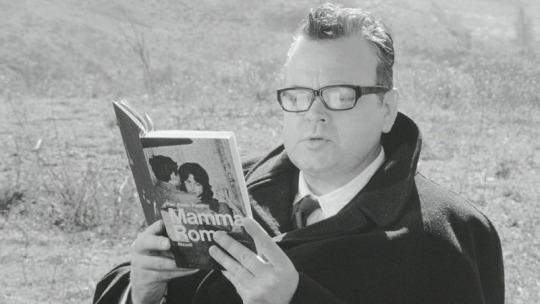
La Ricotta, Pier Paolo Pasolini (1963)
#Pier Paolo Pasolini#Orson Welles#Mario Cipriani#Laura Betti#Edmonda Aldini#Ettore Garofolo#Maria Bernardini#Umberto Bevilacqua#Tonino Delli Colli#Carlo Rustichelli#Nino Baragli#1963
13 notes
·
View notes
Text

Claudia Cardinale and Marcello Mastroianni in Bell' Antonio (Mauro Bolognini, 1960)
Cast: Marcello Mastroianni, Claudia Cardinale, Pierre Brasseur, Rina Morelli, Tomas Milian, Fulvia Mammi, Patrizia Bini, Ugo Torrente. Screenplay: Pier Paolo Pasolini, Gino Visentini, based on a novel by Vialiano Brancati. Cinematography: Armando Nannuzzi. Production design: Carlo Egidi. Film editing: Nino Baragli. Music: Piero Piccioni.
There's no surer target for satire than hypocrisy, particularly when it's rooted in antiquated social mores and religious bigotry. And for Italian filmmakers, there was no more frequent locus for satirizing hypocrisy than Sicily, which was regarded by Northern Italians much the way the American South is seen by the "coastal elites": set in its ways and in the grip of religious intolerance. Usually, Italian films set in Sicily and lampooning hypocrisy are raucous and farcical: Think of Pietro Germi's films Seduced and Abandoned (1964), about the hubbub that ensues when an unmarried woman is discovered to be pregnant, and Divorce, Italian Style (1961), in which Marcello Mastroianni's character comes up against the fact that divorce is illegal, so he plots to catch the wife he doesn't love in an affair and get rid of her by means of an "honor killing." Both films were preceded by Mauro Bolognini's Bell' Antonio, which is just as deeply satiric, but takes a more sober tone in dealing with its subject: a concept of masculinity reinforced by society and supported by the church. There's no better way to appreciate Mastroianni's skill as an actor than to watch Bolognini's film back to back with Divorce, Italian Style. Cocksure and preening in Germi's film, he's lovestruck and tormented in Bolognini's, in which he plays the handsome Antonio of the title, a man with a reputation as a lover of many women, who has slept around but turns impotent when he's with a woman he truly loves. Wedded to the woman of his dreams, Barbara (Claudia Cardinale), he's unable to consummate the marriage and for a while takes advantage of his wife's sexual ignorance. But she discovers that she's been missing something, and uses the situation to have the marriage annulled so she can marry a much richer man than Antonio. When word of his impotence gets out, not only Antonio but also his bragging, macho father, Alfio (Pierre Brasseur), are ruined in the eyes of the society in which they live. Bell' Antonio is often funny, but not in the broadly comic way of Germi's. Bolognini, and Pier Paolo Pasolini's screenplay, view Antonio's plight with sympathy, casting the blame on the reinforcement of machismo by society and church.
5 notes
·
View notes
Text
Uccellacci e uccellini
Dirigendo rischiò la reputazione. Raccontata da Pier Paolo Pasolini.
Contenido reflexivo que muestra la crueldad y realidad del mundo a través de una mescolanza de elementos reales y oníricos.
Seguimos a un padre e hijo que caminan con un cuervo parlanchín predicador de la ideología Marxista.
Las doctrinas filosóficas impartidas por un poeta generan vanguardia cinematográfica. Desde los créditos se aprecia un semblante único;
Nel triste girotondo nel lieto girotondo Luigi Scaccianoce architettò Danilo Donati acconciò Nino Baragli montò e rimontò Ennio Morricone musicò Mario Bernardo e Tonino Delli Colli fotografò Fernando Franchi organizzò Sergio Citti da filosofo aiutò.

0 notes
Video
tumblr
The Art of Editing in The Good, the Bad, and the Ugly
(First 4 Minutes)
Watch the full video here: https://vimeo.com/86125935
A shot-by-shot investigation of the three-way standoff at the climax of Sergio Leone's The Good, the Bad, and the Ugly, revealing mathematical patterns, images of thought, and pure musical rhythm.
A video essay by Max Tohline, 2013. Dedicated to the editors, Eugenio Alabiso and Nino Baragli.
For educational use only. The content of this video is protected by the Academic Fair Use clause (Section 107) of the U.S. Copyright Act of 1976. For further information, see: copyright.gov/circs/circ21.pdf
0 notes
Photo










Django (Sergio Corbucci, 1966).
#django (1966)#sergio corbucci#franco nero#enzo barboni#nino baragli#sergio montanari#carlo simi#francisco canet#django#spaghetti western
478 notes
·
View notes
Photo

REFERENCIAS EN MONTAJE
EL BUENO, EL MALO Y EL FEO (1966)
DIRECCIÓN:
Sergio Leone
MONTAJE:
Eugenio Alabiso Nino Baragli Vrej Allahverdian Joe D'Augustine Sharol Olson Sergio Donati Neri Nazzareno
0 notes
Text
“Per le antiche scale” (1975)
A.K.A.: "Down the ancient stairs"
Directed by: Mauro Bolognini
Country: Italy
Length: 110 min.
Genre: Drama
Cast: Marcello Mastroianni, Marthe Keller, Barbara Bouchet, Lucía Bosé, Enzo Robutti, Adriana Asti
Cinematographer: Ennio Guarnieri
Editor: Nino Baragli
Music by: Ennio Morricone
#Adriana Asti#Ennio Morricone#Ennio Guarnieri#Nino Baragli#mauro bolognini#italy#france#drama#1975#1970s#Marcello Mastroianni#marthe keller#barbara bouchet#lucia bose#enzo robutti
0 notes